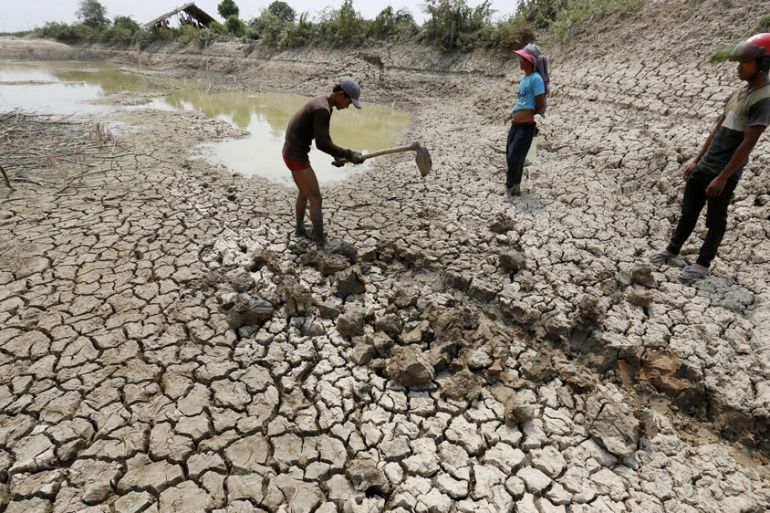Sixty-five tonnes of fish perish in Cambodian lake
The natural phenomenon El Nino is blamed for low water levels and rising temperatures.

About 65 tonnes of fish have been found dead in Tonle Chhmar Lake in central Cambodia.
The deaths are thought to be due to a combination of drought and a heatwave affecting much of Southeast Asia.
Keep reading
list of 4 itemsAfter the Hurricane
World’s coral reefs face global bleaching crisis
Why is Germany maintaining economic ties with China?
According to the Cambodia Daily newspaper, the drought reduced the water level in the lake to just 20cm, and the temperature of the shallow water soared in the heatwave.
Temperatures in many parts of the country are well above average for this time of year, with the capital Phnom Penh seeing temperatures about 5C above usual.
The heatwave is exacerbating the issues of the drought which have been affecting the country since monsoon rains failed last year.
The rainy season in Cambodia starts in May, and runs until November. It brings approximately 75 percent of the annual rainfall.
Last year the rains were far weaker than usual – a consequence of the El Nino conditions dominating weather around the globe.
READ MORE: Is La Nina about to follow El Nino?
El Nino is the warming of the surface waters in the Pacific Ocean, which affects worldwide weather.
In Southeast Asia, El Nino is known to reduce the rain which falls during the wet season, and also makes the dry season hotter than usual.
The extreme El Nino of 1997-1998 brought widespread food shortages to Cambodia.
The current El Nino rivals that of 1997-1998 and its impact has also been severe. Many parts of Southeast Asia are in a drought, with the situation in Cambodia believed to be the worst in decades.
The deputy governor of Banteay Meanchey province, Oum Chantha, said authorities began transporting water to families in need two weeks ago, but that the situation had worsened after the Mongkol Borey reservoir dried up last week.
Residents are being urged to conserve water until the rains arrive in May. However, it is feared that although El Nino is drawing to an end, it could still cause the rains to start later than usual.
Additional reporting by Steff Gaulter